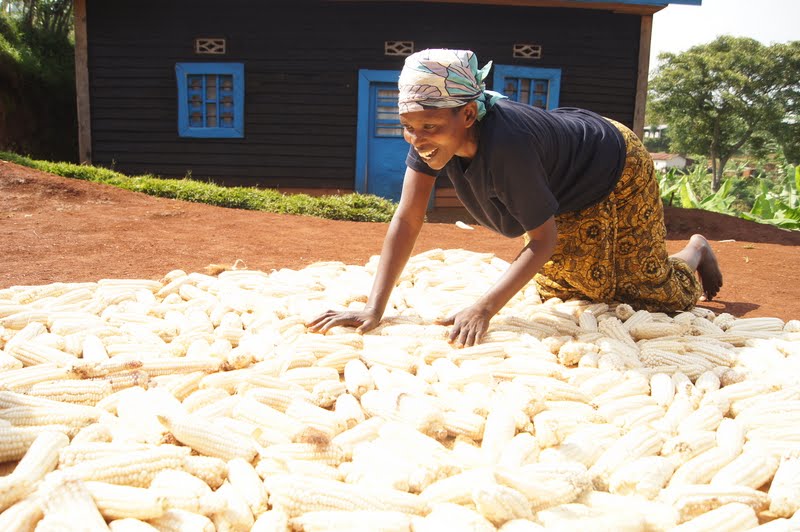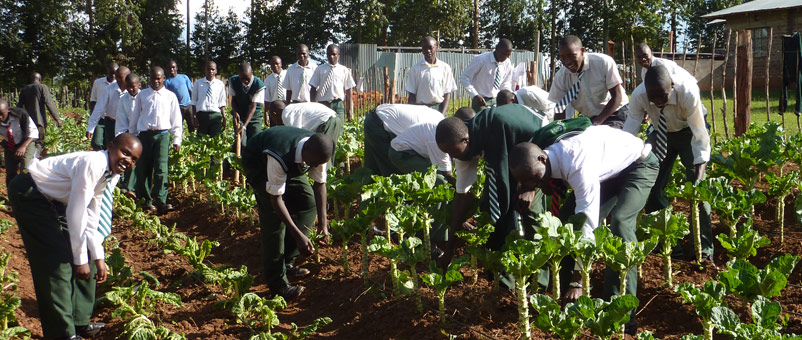More than 75 percent of the world’s poor are farmers. Their profession is to grow food, yet many employ outdated agricultural tools and techniques. Despite their hard work, millions of farmers barely grow enough to feed their families. Many agriculture programs aim to address this by providing specific services, such as training or farm inputs. Yet, few programs address all of farmers’ obstacles to growing more food. A small loan to farmers is of little use if farmers cannot find farming inputs such as seed and fertilizer to buy in their community. Even when farmers can access farming inputs, they do not always know how to make the most of them. Frequently, when they can find the inputs and use them successfully, there are no markets to sell their surplus harvest. Farmers need support in accessing inputs, education and markets to increase their yields and incomes.
Founded in 2006, One Acre Fund currently helps 130,000 rural smallholder farmers in Kenya, Rwanda, and Burundi increase their yields through a “market bundle” that brings simple tools and farm education to underserved farm families.
The One Acre Fund “market bundle” consists of four parts:
- Inputs: One Acre Fund distributes seed and fertilizer within 2 kilometers of where farmers live, in time for planting.
- Financing: One Acre Fund provides seed and fertilizer as an in-kind loan. Farmers repay in cash over the course of the growing season, with final repayment a few weeks after harvest. One Acre Fund reports a 98% repayment rate historically.
- Training: In addition to providing farm inputs, One Acre Fund trains farmers on simple but effective agriculture techniques. For example, One Acre Fund teaches farmers how to use a piece of string to plant in a straight row, and a bottle cap to measure the appropriate amount of fertilizer.
- Market Facilitation: One Acre Fund helps farmers increase their income following their increased harvest. Farmers usually get a better price for their products if they wait to sell for a few months after harvest. One Acre Fund provides extensive resources to promote post-harvest storage. One Acre Fund provides storage bags and insecticide dust, as well as training in how to use these inputs safely and efficiently.
One Acre Fund provides this entire bundle of services within 2-3 kilometers of farmers’ homes. This is a key innovation, as many farmers cannot reach major towns due to distance and lack of transportation. One Acre Fund currently employs more than 1,500 local field staff responsible for delivering all of its services in their communities, from recruiting and signing up families, to arranging input delivery, conducting trainings, and collecting loan repayment.
One Acre Fund partners with local seed companies in the countries where it operates, as well as national agriculture research institutions, to ensure that its farmers receive the best inputs possible. In addition, the organization collaborates with the national and local governments in the countries where it operates. One Acre Fund regularly share best practices and seeks to amplify the voices of smallholder farmers, a powerful but underrepresented constituency, in policy decisions.
The One Acre Fund model has proven to be effective in increasing farm income. On average, farmers grow enough to double net income on every planted acre, effectively growing their own way out of poverty and allowing more parents to pay for their children’s schooling, more families to invest in small businesses to further boost their income, and more women to become leaders in their communities. However, One Acre Fund recognizes that these results may not be possible to achieve in every country. The organization carefully chooses each country and district of operation based upon high poverty rates, low fertilizer use rates, and high potential for impact. Using this model, One Acre Fund aims to scale-up its model to serve 1.5 million families in five to eight countries in sub-Saharan Africa and beyond by 2020.
Read more about a One Acre Fund farmer in a Farming First blog post available here. You can also visit One Acre Fund’s website at www.oneacrefund.org.







